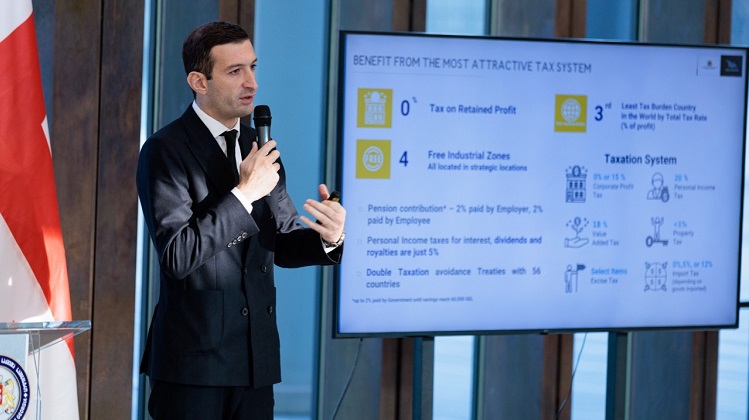Leading chemicals corporation enters Georgia following deal

Indorama Corporation, a leading Asian chemical company based in Singapore, has bought 100 percent of shares of the Georgian Azot plant. Photo: Economy Ministry press office
Indorama Corporation, a leading Asian chemical company based in Singapore, has bought the Georgian-based Rustavi Azot plant, one of the largest suppliers of mineral fertilisers and industrial chemicals in the South Caucasus region.
The Georgian Economy Ministry announced the deal on Friday, and said it followed the corporation’s exploration of the Georgian investment climate and business opportunities over the years.
It also noted the engagement of Enterprise Georgia - a state campaign launched by the Georgian Government to support entrepreneurship in the country - in the talks leading to the deal.
Enterprise Georgia Head Mikheil Khidureli on Friday commented on the development by saying the fact of the “largest Singaporean corporation” entering the Georgian market demonstrated the investment potential of the country “once again”.
 Khidureli said the Corporation planned large investments in the Georgian plant. Photo: Enterprise Georgia.
Khidureli said the Corporation planned large investments in the Georgian plant. Photo: Enterprise Georgia.
He also said the successful completion of the deal had followed support from the Georgian Government and added investment in the domestic production was expected to be “one of the largest in Georgia”.
The Corporation plans to ensure serious funds for the modernisation, development and expansion of the plant’s production”, Khidureli noted.
In details about the buyer, the Ministry said Indorama Corporation, a company with history going back to 1975, had 160 plants in ownership in 38 countries and employed over 45,000 people.
The products manufactured by the corporation include nitrogen and phosphate fertilisers, polyethylene, polypropylene, polyester, textiles, cotton fibre and medical gloves.
Rustavi Azot was launched back in 1956, under Georgia’s Soviet authorities, and initially produced ammonia with the use of local raw materials. It was transformed into a plant in 1947.
 Tweet
Tweet  Share
Share